Trinity Episcopal Church
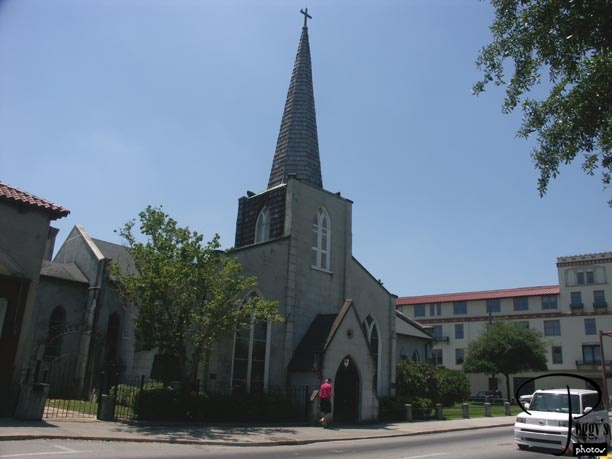
Continuing my walk around St. Augustine: The Trinity Episcopal Church is right across from the Plaza. It is both the first Episcopal church in the state of Florida, with its cornerstone laid in 1825, and the oldest Protestant church in Florida.

Trinity Episcopal Church
Trinity Episcopal Church

View from the side of the church’s entrance.

Trinity Episcopal Church
Trinity Episcopal Church
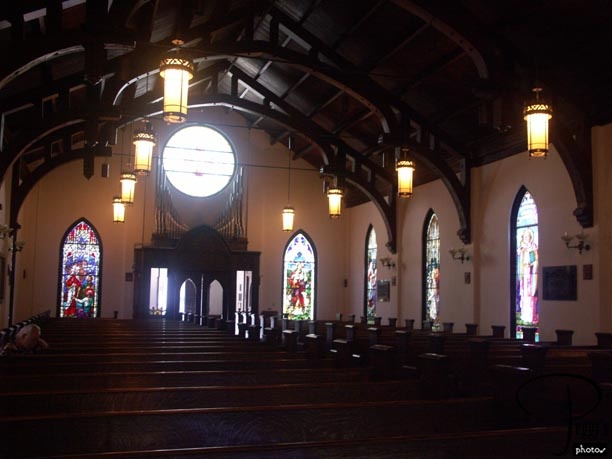
Inside the church.

Trinity Episcopal Church
Trinity Episcopal Church
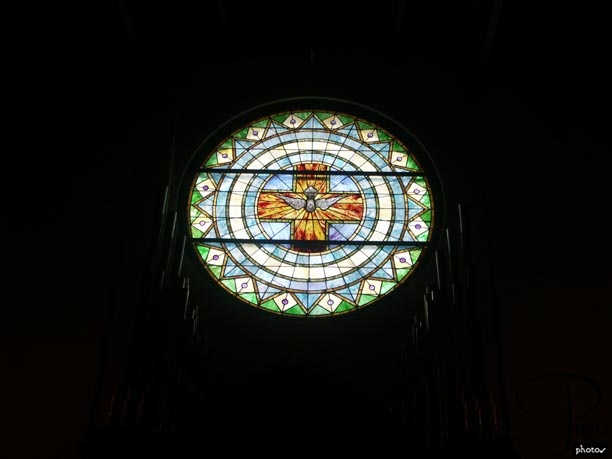
Stained–glass rose window in the church’s nave. It pictures a descending dove, a symbol of the Holy Spirit. The window is a copy of a window in St. Peter’s Bacilica in Rome.

Trinity Episcopal Church
Trinity Episcopal Church
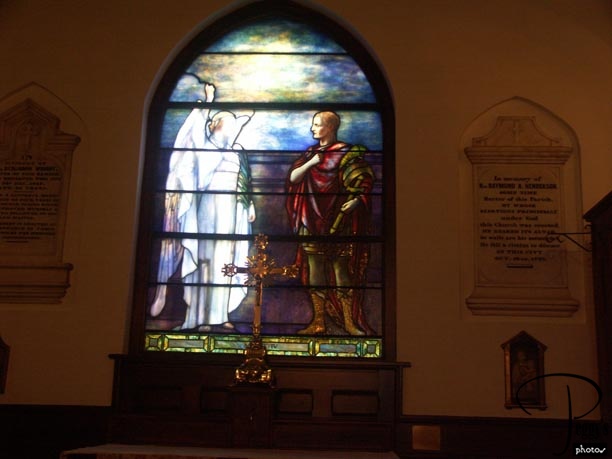
But this is the church’s most famous stained–glass window, one depicting Cornelius and the Angel, as it is signed by Louis C. Tiffany. More later as to why a Tiffany window is found in a small church in St. Augustine.

Trinity Episcopal Church
Trinity Episcopal Church
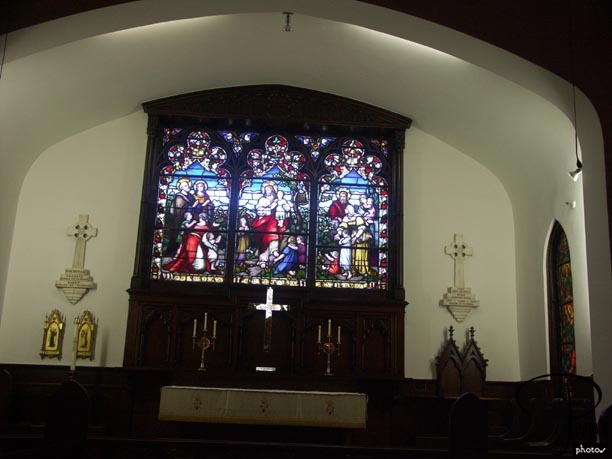
More stained–glass windows.

Trinity Episcopal Church
Trinity Episcopal Church
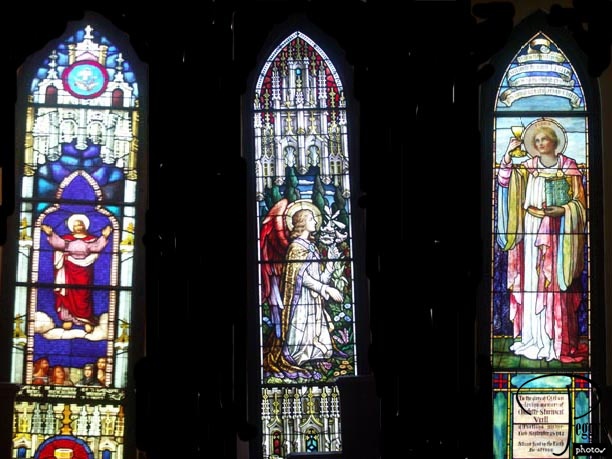
More stained–glass windows.

Trinity Episcopal Church
The Government House
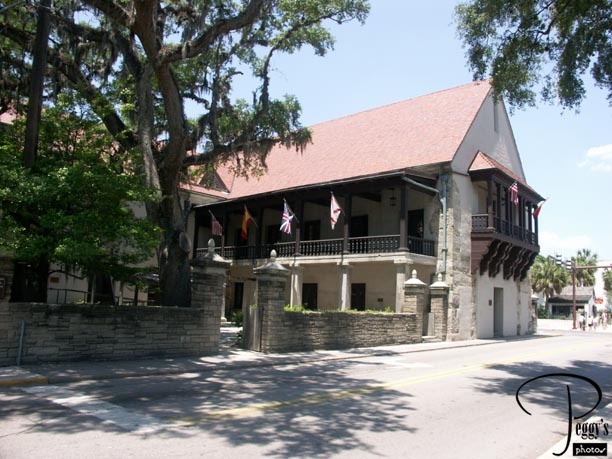
Also across the street from the Plaza is the Government House which housed the offices and residence of the colonial governor for 200 years. Inside the Government House is a museum of St. Augustine history.

The Government House
Horse and Buggy
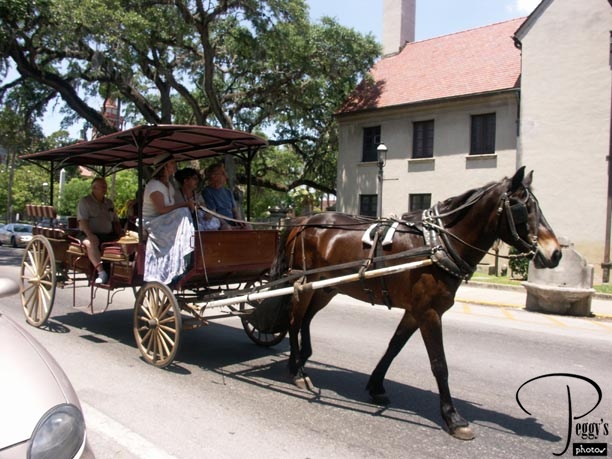
Horse and buggy passing by. These rides are very popular with the tourists.

Horse and Buggy
Casa Monica Hotel
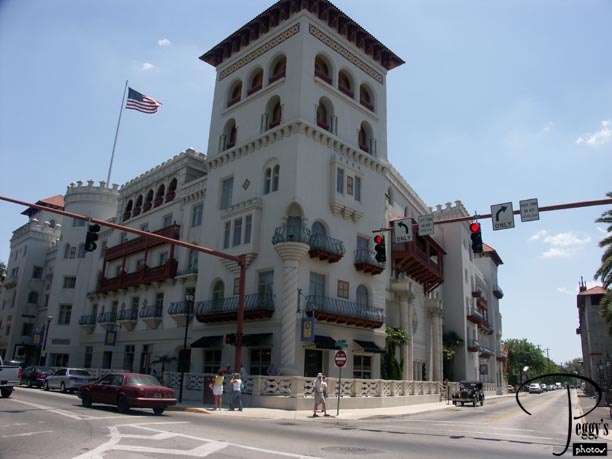
I continued walking south to Cordova and King Streets to the Casa Monica Hotel, which brings us to the “Flagler Period” of St. Augustine history. In the late 1880s, Henry Flagler, then a former partner of John D. Rockefeller of the Standard Oil Company, set out to create a winter resort in St. Augustine for wealthy Americans. He owned a railroad company and extended his East Coast lines into St. Augustine. He then built two huge hotels and also bought a third one––the Casa Monica, which was built by Franklin W. Smith in 1888. Flagler bought the Casa Monica six months after it opened and renamed it the Cordova. The Cordova didn’t make it through the Depression, closing in 1932. In 1962, it was sold to St. Johns County to be used as a courthouse. In 1997, it was resold and turned back into a luxury hotel––again renamed the Casa Monica. Note the old Ford parked, for a great effect, on the side street.

Casa Monica Hotel
The Alcazar
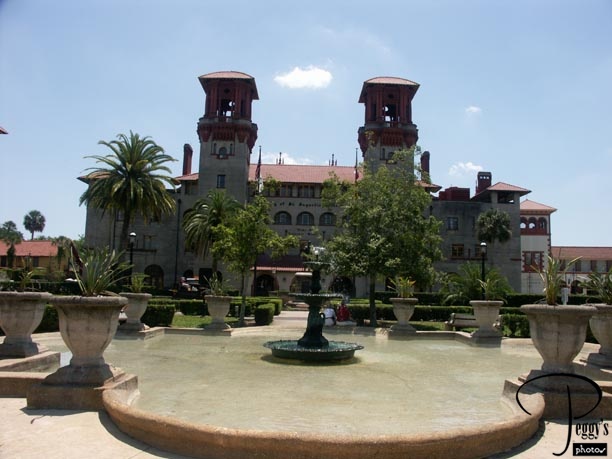
Directly across the street from the Casa Monica is the old Alcazar Hotel, the second hotel built by Henry Flagler (in 1888) in St. Augustine. It was designed by John M. Carrere and Thomas Hastings, two architects who became famous after designing for Henry Flagler––they later designed the New York Public Library. The Alcazar was modeled after a Moorish palace in Southern Spain. The Alcazar also didn’t make it through the Depression and closed it doors in 1932. In 1947, it was sold to O.C. Lightner, a publisher, who deeded it to the City of St. Augustine to house his collection of Victorian memorabilia. Today, the Alcazar houses both the Lightner Museum and city offices.

The Alcazar
The Alcazar
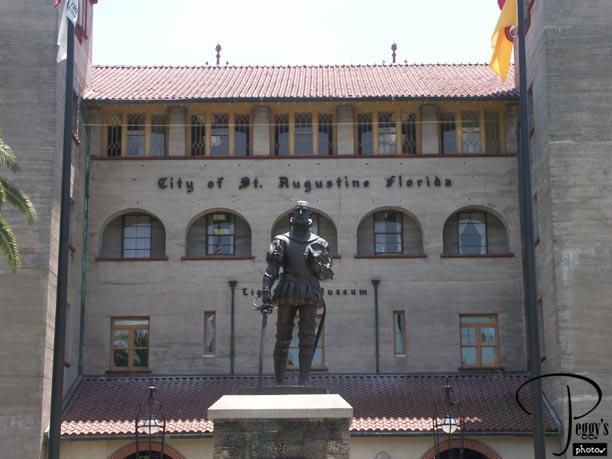
Statue of Don Pedro Menendez de Aviles (1519–1574), founder of St. Augustine on September 8, 1565, in front of the Alcazar. He was “Captain General, Conquistador, Adelantado in Perpetuity of Florida.”

The Alcazar
The Alcazar
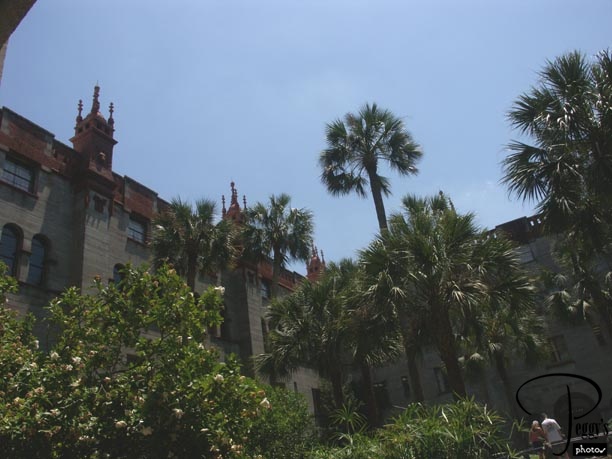
Inside the grounds of the Alcazar.

The Alcazar
The Alcazar
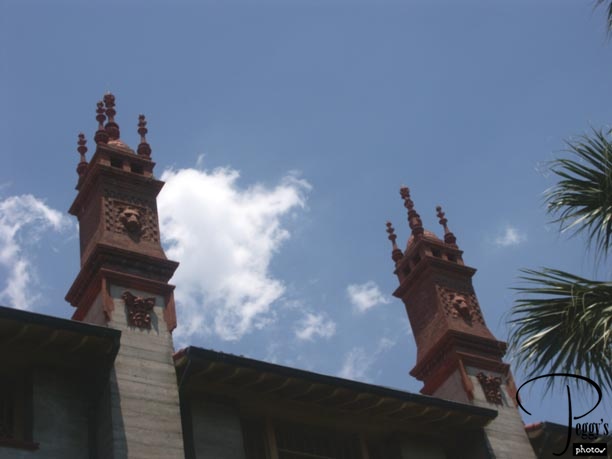
Lion tops of the columns.

The Alcazar
The Alcazar
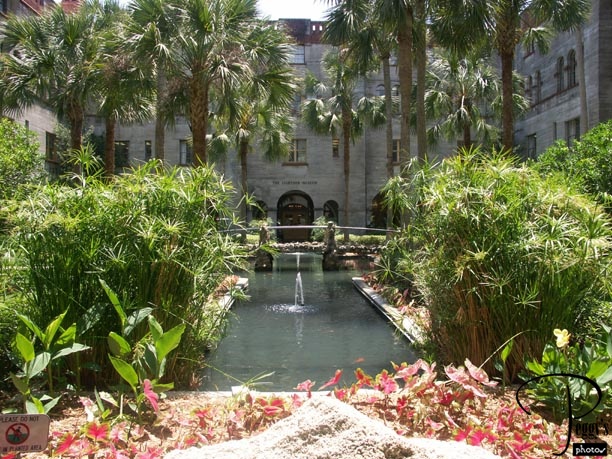
Inside the grounds of the Alcazar. The pond is filled with carp.

The Alcazar
The Alcazar

One of the carp.

The Alcazar
The Alcazar
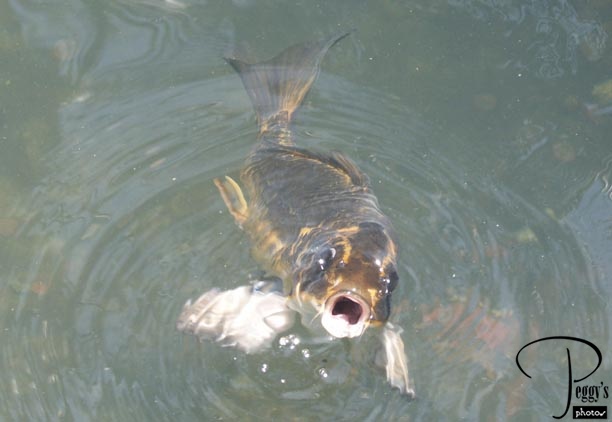
I think this fish thought that I had some food for it.

The Alcazar
The Alcazar

A young boy came to stand next to me––he had fish food with him (I think there is a place at the Alcazar to buy it). Photo: start of a feeding frenzy.

The Alcazar
The Alcazar
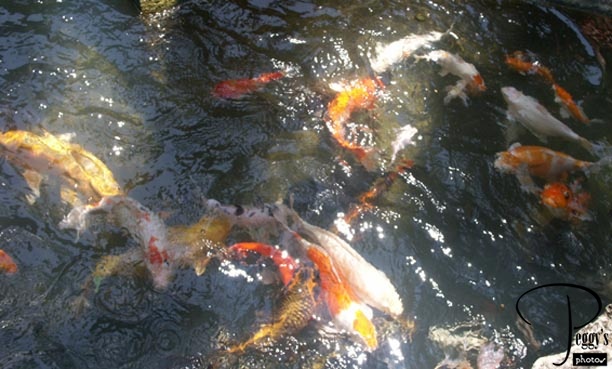
The feeding frenzy in full force.

The Alcazar
The Ponce de Leon Hotel/Flagler College
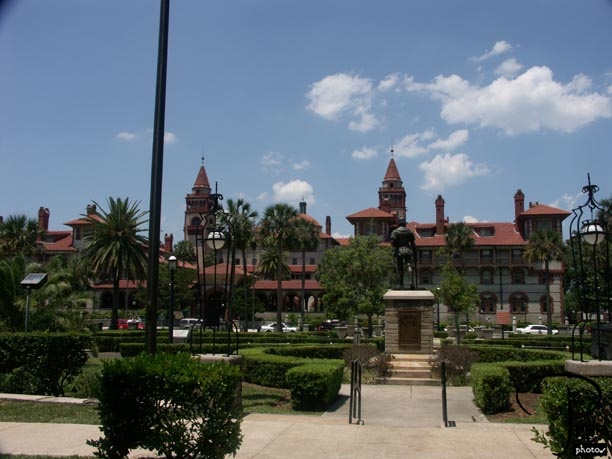
Directly across from the Alcazar is the first hotel that Henry Flagler built in St. Augustine, the Ponce de Leon. This hotel was also designed by Carrere and Hastins but in the Spanish Renaissance Revival style. Louis C. Tiffany decorated the inside of the hotel using stained glass, mosaics, and terra cotta reliefs (hence, the presence of Tiffany in St. Augustine). The Ponce de Leon opened in 1887–88, but was only successful as a hotel part of the time. In 1967, the hotel closed and it was sold to Flagler College. I went on a tour of the Ponce de Leon/Flagler College the next day and will put my photos of it on a later album.

The Ponce de Leon Hotel/Flagler College
The Ponce de Leon Hotel/Flagler College
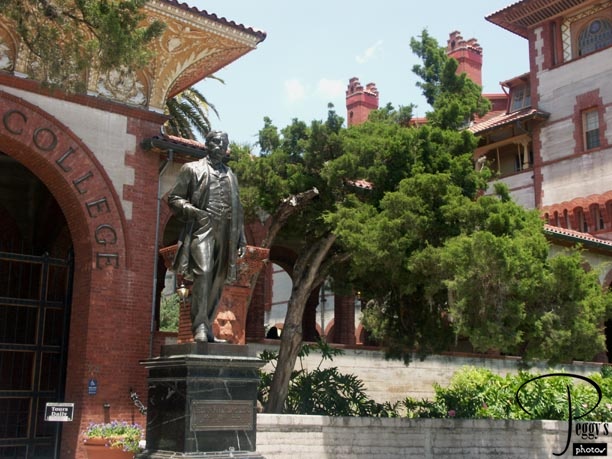
Statue of Henry Flagler in front of the hotel/college.

The Ponce de Leon Hotel/Flagler College
The Flagler Hotels
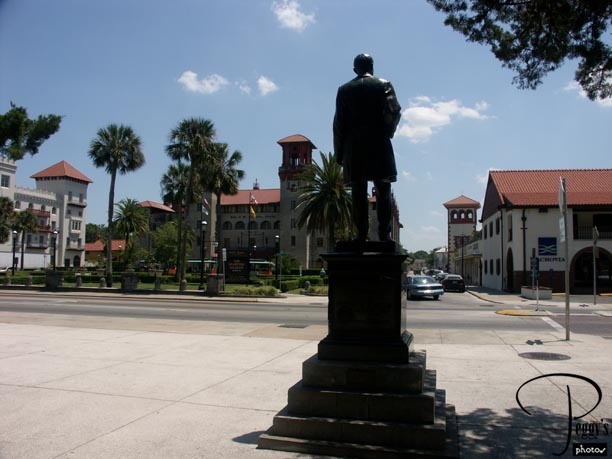
The back of the statue of Henry Flagler looking at the other two Flagler hotels: on the left, the Casa Monica, and directly across the street, the Alcazar.

The Flagler Hotels
The Flagler Hotels
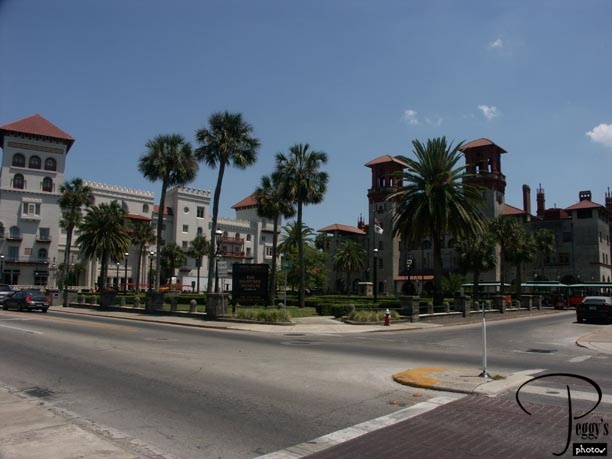
Another view.

The Flagler Hotels
Zorayda Castle
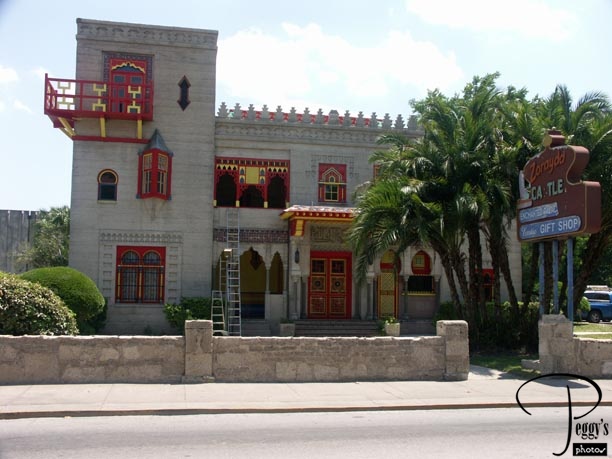
On King Street, the Zorayda Castle, designed by Franklin Smith, the architect of the Casa Monica, and built in 1883 as a reproduction of a portion of the Alhambra Castle in Spain.

Zorayda Castle
On Aviles Street
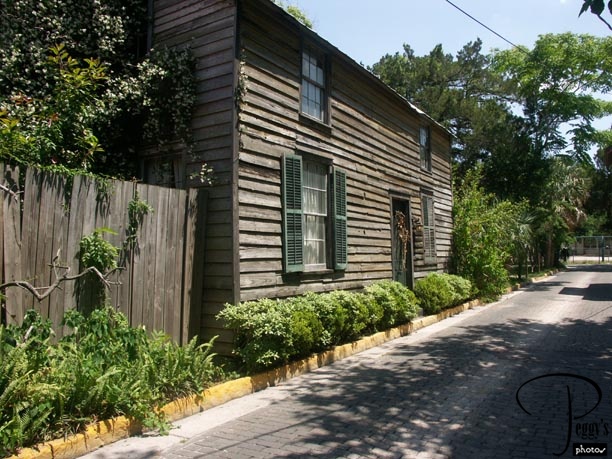
I next walked from King Street to Aviles Street. I was headed to the oldest house in St. Augustine. I passed this old house on the way (no information as to when it was built).

On Aviles Street
On My Walk
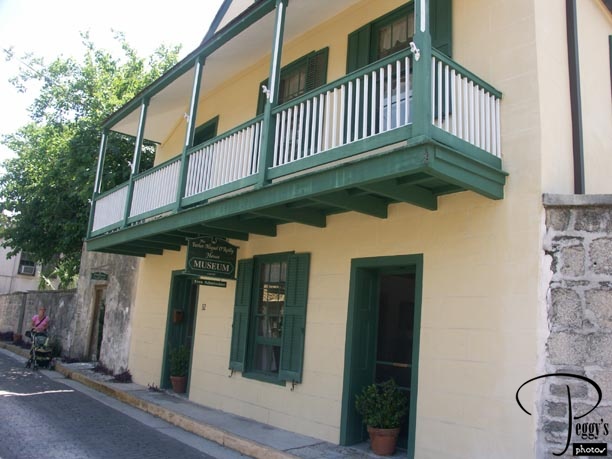
The Father Miguel O’Reilly House, built prior to 1763. (Father O’Reilly’s first name was really Michael, but the Spanish often renamed the people who they respected with the Spanish version of their first names.) It is a Spanish Colonial house and now houses the Sisters of St. Joseph.

On My Walk
On My Walk
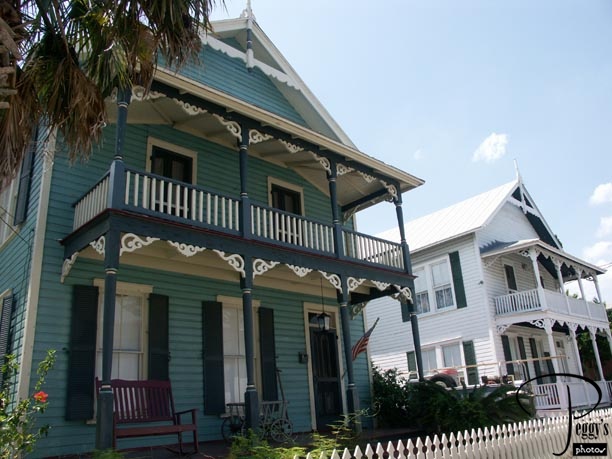
The Wescott House, built in the 1880s and now a bed and breakfast.

On My Walk
On My Walk
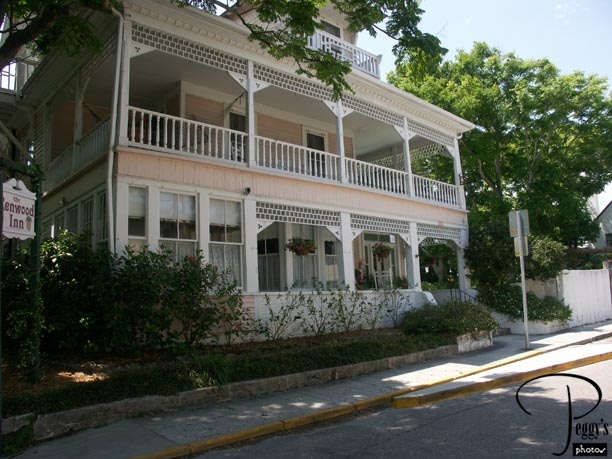
The Kenwood Inn B&B, built between 1865 and 1885.

On My Walk
On My Walk
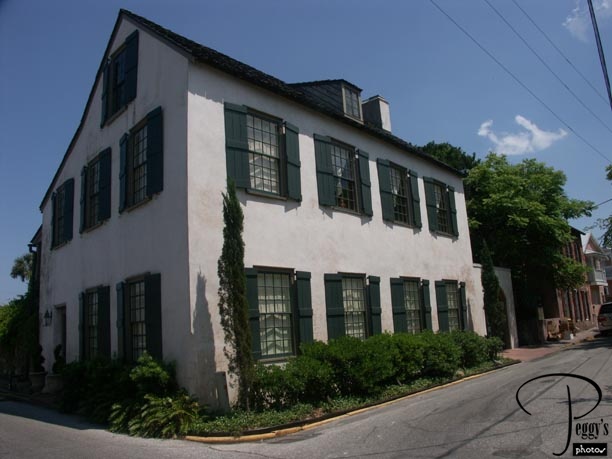
The Long–Sanchez House, constructed of coquina in the early 1800s.

On My Walk
On My Walk
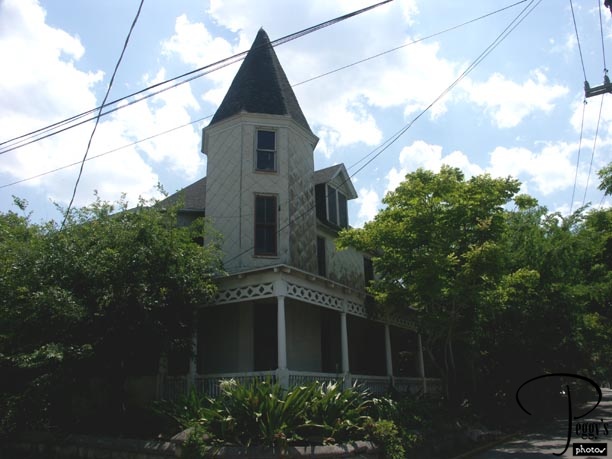
The Countess of Montjoye House, 1889, built in the Queen Anne style. The countess was the American wife of a Bavarian count.

On My Walk
On the Avenida Menendez
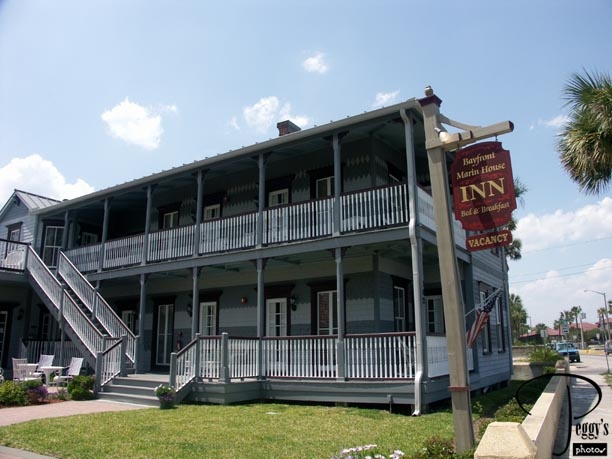
I found that I was walking through streets without any other people on them, which made me a bit nervous, even though I really didn’t think that I would be mugged in St. Augustine. I was also getting very tired––it was also very hot––so I put off visiting the oldest house until the next day. I walked to Avenida Menendez and started my way back along that avenue to the Casa de la Paz. This photo is of the Bayfront Marin House Inn, another B&B on the Avenida Menendez, but south of the Bridge of Lions.

On the Avenida Menendez
On the Avenida Menendez
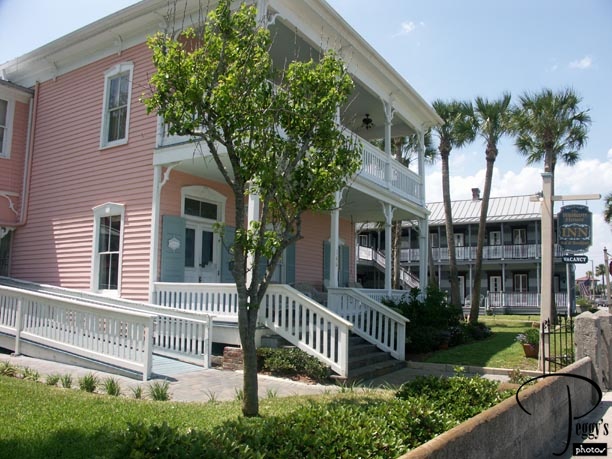
The Westin House Inn, another B&B, also south of the Bridge of Lions.

On the Avenida Menendez
On the Avenida Menendez
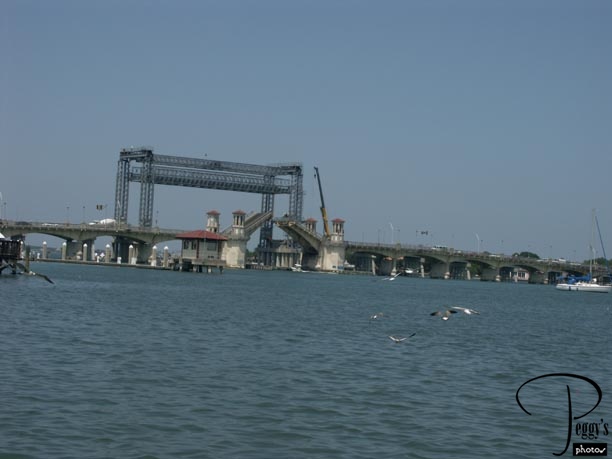
The Bridge of Lions. The bridge was not very picturesque on this visit as a temporary bridge is being built on the side of it that will be used while the Bridge of Lions is worked on. The famous lions at the beginning of the bridge were also removed. Its drawbridge is up in the photo. If you are unlucky enough to try to get on the bridge when it is letting a boat through, you will have a long wait to be able to cross it. It connects St. Augustine with Anastasia Island.

On the Avenida Menendez
On the Avenida Menendez
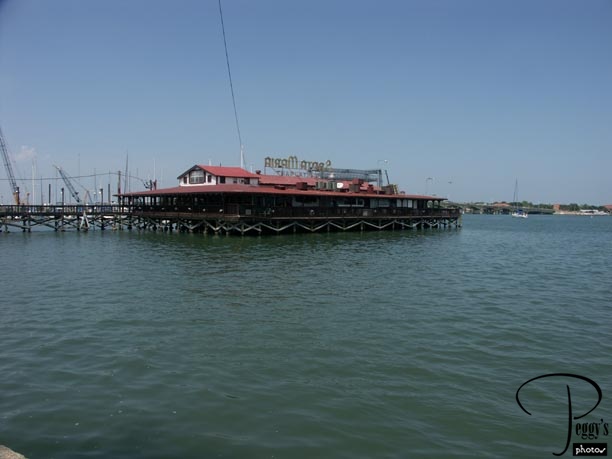
The Santa Maria Restaurant where you can feed fish in tanks on the side of the restaurant while you eat.

On the Avenida Menendez
On the Avenida Menendez
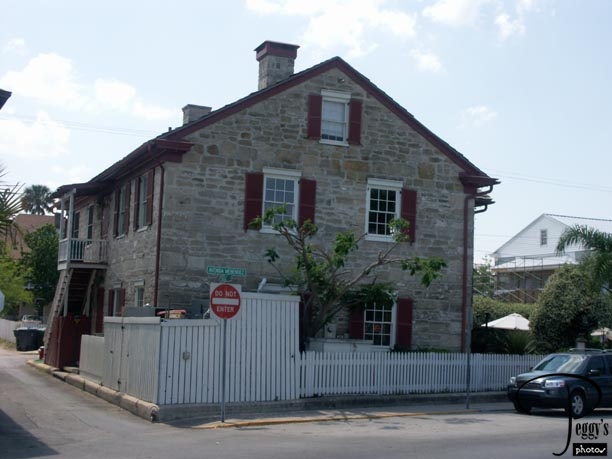
O.C. Whites Restaurant, built circa 1790. I ate lunch here two days later.

On the Avenida Menendez
On the Avenida Menendez
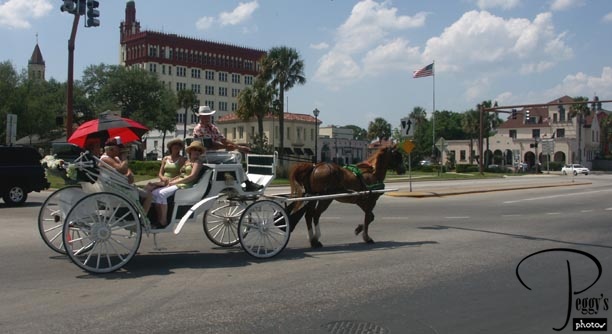
Another horse and buggy riding by.

On the Avenida Menendez
On the Avenida Menendez
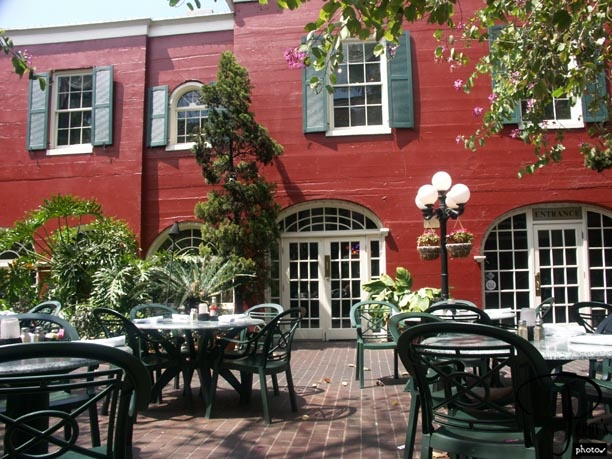
I was quickly fading––too hot outside and I was tired. I stopped off at Harry’s Seafood Restaurant and Bar near my B&B for a large Diet Coke with lots of ice. Harry’s is located in the Carr House, rebuilt around 1850. I spent some time looking at Harry’s menu in case I wanted to eat here sometime. I found these interesting offerings: blackened chicken eggrolls, voo doo shrimp, Cajun popcorn, shrimp and crawfish fondeaux, fried green tomatoes, crabmeat and eggplant Napoleon, jambalaya, and crawfish and shrimp etouffee.

On the Avenida Menendez
On the Avenida Menendez
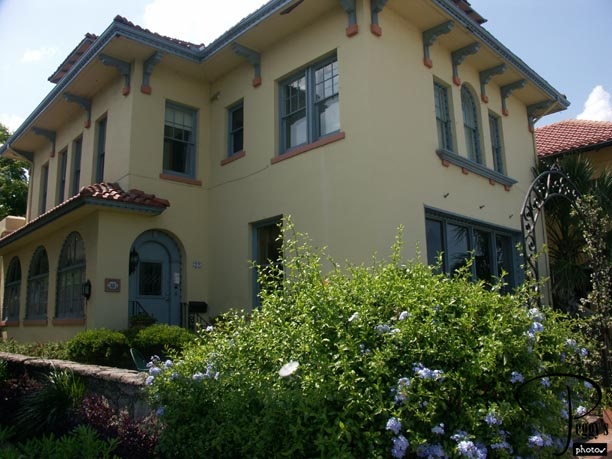
Back at the Casa de la Paz.

On the Avenida Menendez
On the Avenida Menendez
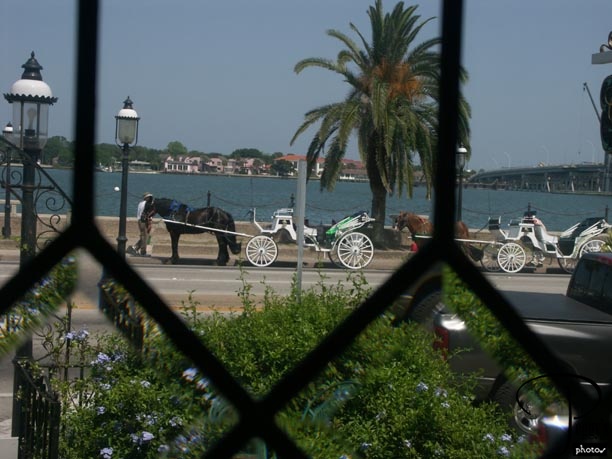
Horses and buggies lined up across the street from the Casa de la Paz. Photo taken from inside the door of the Casa de la Paz.

On the Avenida Menendez
On the Avenida Menendez
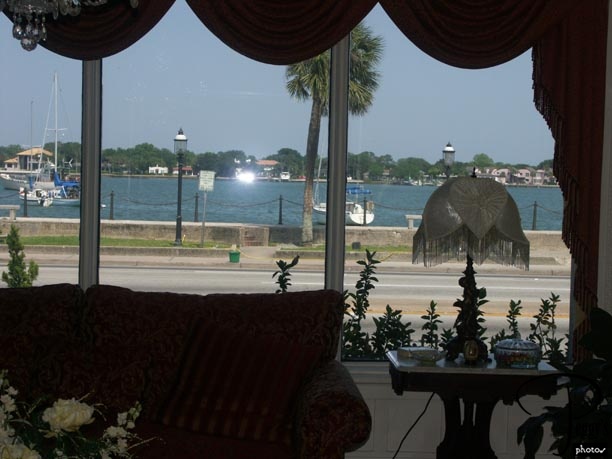
View of the Intercoastal Waterway from the parlor window of the Casa de la Paz.

On the Avenida Menendez
On the Avenida Menendez
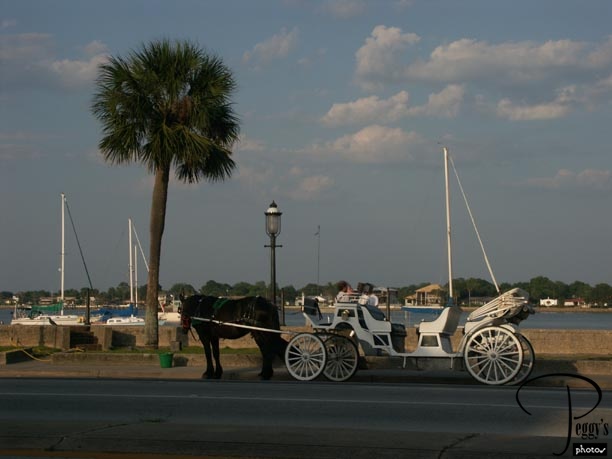
I took a nap and then went out for dinner. I took this photo on my way to dinner.

On the Avenida Menendez
On the Avenida Menendez
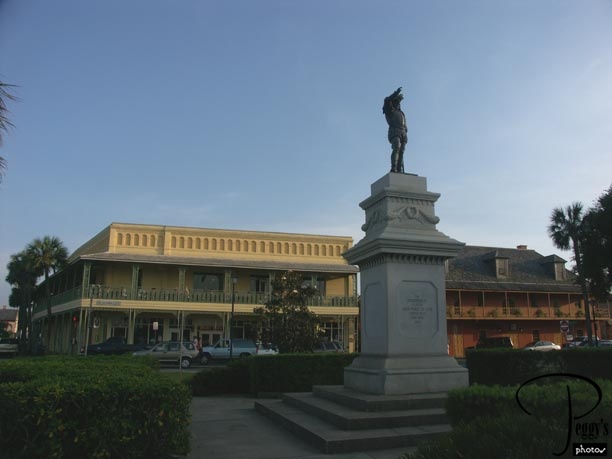
The statue of Juan Ponce de Leon in front of the building #1 King Street, built in 1888. It is now the A–1A Ale Works, where I ate my dinner. It is a very popular restaurant featuring New World Cuisine, which is “a fusion of culinary influences that flourished as a result of Columbus’ discoveries,” meaning influences from Cuba, Florida, the Caribbean, and Latin America. I ordered Tavern Shrimp––lightly breaded with a creamy hot sauce. I ordered the wrong dish and didn’t care for it very much. Along with a salad, key lime cheesecake, and coffee, the bill came to about $23.00 plus tip.

On the Avenida Menendez
On the Avenida Menendez
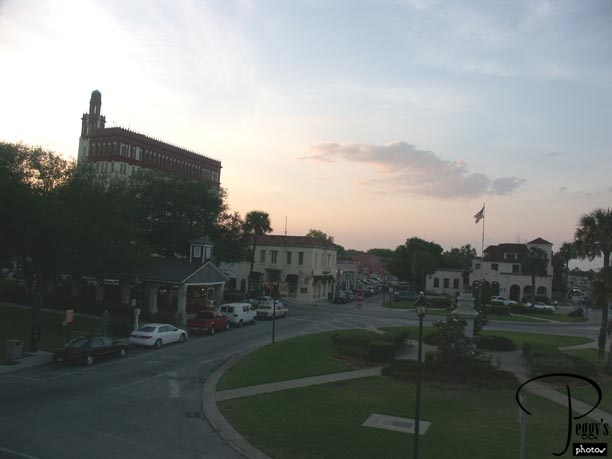
View from the restaurant.

On the Avenida Menendez
On the Avenida Menendez
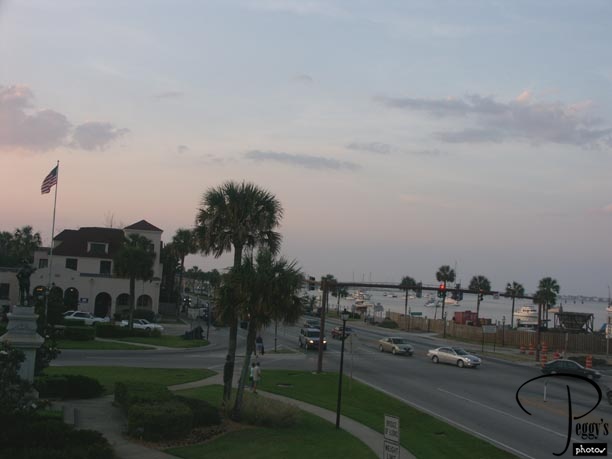
Another view from the restaurant. I went back to the Casa de la Paz after dinner and ended a very interesting day.
